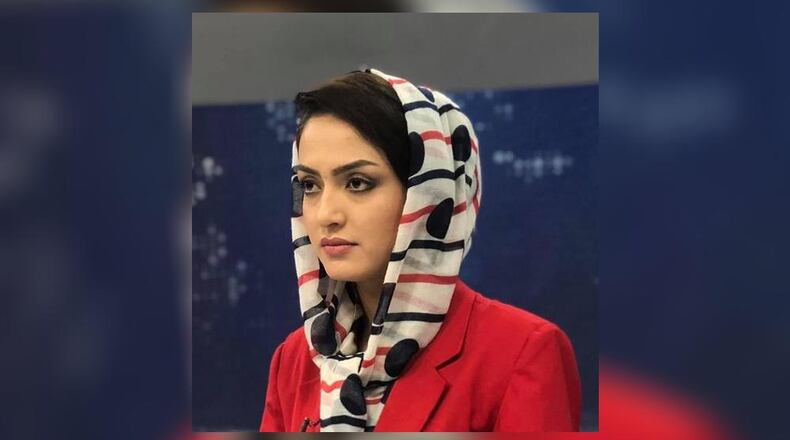Being an anchor at Zan television, which is a well known name in the Afghan media sector before the Taliban takeover of August 2021, was a real opportunity from where I started my journey to become a professional broadcaster. Working in television converted my dream into reality. I worked day and night at Zan TV, a women-owned and women-run television station. It was a tiring process to learn but at the same time, a path full of joy and enthusiasm.
After working with a number of other broadcasters, I got a job with Ariana News, one of the two top news channels in Afghanistan. All while being a woman. In Afghanistan.
Now, sixteen months have passed since the fall of Afghanistan to the Taliban. In that period of time, all political, security, economic and social structures built by women and others over the past twenty years have collapsed or are in the process of total destruction.
In late December, the Taliban made one of its most dramatic moves: it banned women from universities. The United Nations called it “a new low further violating the right to equal education and deepens the erasure of women from Afghan society.” Protests quickly took place in the capital, Kabul, but were shut down by the Taliban, according to international media.
Since the Taliban took over last year, a new war has started, a war against women in a systematic way.
Once it regained control, it established a caretaker cabinet, with no women named among the ranks. Then, the Taliban closed the doors of the schools to female students above sixth grade, citing problems in the curriculum to “cultural issues.”
This educational barrier is a big problem. The Taliban clearly stated that this year’s 12th grade class of girls will not be able to choose journalism, agriculture, engineering and other fields in university entrance exams.
Despite this, this month thousands of girls took graduation exams despite not being able to attend any classes. Despite this huge disadvantage, it is both a show of defiance and a message to the Taliban that women and girls are still fighting for their rights.
Still, watching from afar it feels like women are weakening and disappearing. Though over the past 16 months, women came out into the streets time and time again, chanting slogans seeking bread, work and freedom, every time they faced a reaction from the Taliban, and the protests turned violent.
In the past year, unfortunately, the removal of women from all structures, especially political and social, as well as creating the most serious challenges for the education and higher education of this segment of society, has been one of the things that has made the future of Afghan women dark.
What is worse is that since the Taliban has taken over, funding from the US (amounting to $3.5 billion) and other governments has dried up, meaning there is even less money to go to girls’ education.
But let’s not give up. Girls in Afghanistan cannot afford for us to do so. There are many organizations helping girls in Afghanistan. You can help, too:
- CARE’s Afghanistan Humanitarian Fund is working to reach 500,000 vulnerable Afghans with emergency food, health services, shelter, and support for refugees.
- Women for Women International’s Emergency Fund for Afghanistan will match your donation up to $500,000.
- Save the Children champions the rights of the world’s 2.3 billion children. In the past year, it reached 602,000 girls and boys in Afghanistan and is focused on providing emergency aid to displaced families.
- AfghanAid works in some of the most remote regions of Afghanistan and is supporting families who have lost their homes and livelihoods across the region.
Basira Joya is a television anchor and media professional who lives in Dayton. This piece was translated by Lida Arezo.
About the Author

